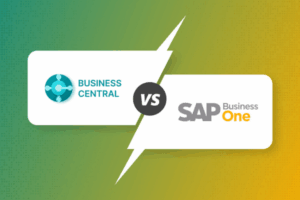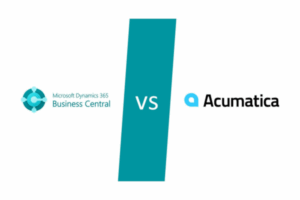How Long It Takes to Implement a Chemical Manufacturing ERP
For most companies, it takes 6 to 12 months to implement a chemical manufacturing ERP. However, that range can stretch based on the scale and complexity of your business.
- Small to mid-sized manufacturers with minimal customization: 3–6 months
- Mid-market manufacturers with moderate complexity: 6–12 months
- Enterprise manufacturers with global operations: 12–24 months
The key takeaway? The more your ERP is tailored to chemical manufacturing out of the box, the faster and smoother your implementation.
Key Phases to Implement a Chemical Manufacturing ERP
Understanding the phases will help you set realistic expectations. Here’s how most ERP rollouts unfold in the chemical sector:
Discovery and Requirements (2–6 weeks)
This is where your implementation partner learns your workflows, pain points, and compliance needs. If you manufacture, blend, or distribute hazardous products, this is where those processes are mapped out.
Configuration and Customization (6–12 weeks)
ERP systems for chemical manufacturers need features like batch processing, formula management, GHS labeling, and regulatory reporting. The closer your ERP comes with these features prebuilt, the less time this takes.
Data Migration and Testing (4–8 weeks)
Migrating item records, formulas, lot history, and vendor data can take time—especially if your existing records are in multiple spreadsheets or legacy systems. Validation and testing are critical.
Training and User Adoption (4–6 weeks)
Even the best system falls flat without user buy-in. Train key users in production, QA, compliance, and warehouse operations. A pilot or soft launch can help fine-tune workflows before full deployment.
Go-Live and Support (2–4 weeks)
Once your team is trained and the data is clean, it’s time to go live. Expect a few weeks of intensive support as users adjust and questions come in.
Factors That Affect How Long It Takes to Implement a Chemical Manufacturing ERP
Several factors can influence your timeline when planning to implement a chemical manufacturing ERP:
- Size and complexity of your operations: If you operate across multiple locations or manage a wide range of custom formulations, expect a longer implementation window. The need to standardize processes across different plants and accommodate complex workflows can add months to your timeline.
- ERP software choice: A system specifically designed for chemical manufacturing will speed up implementation by offering built-in features like batch tracking, GHS labeling, and regulatory reporting. A generic ERP, on the other hand, may require time-consuming customization to meet industry needs.
- Level of customization required: Every change from standard functionality requires additional design, development, and testing. If you need deep integration with other platforms or highly tailored workflows, your implementation may take longer to complete.
- Team engagement and availability: Your internal team’s involvement is critical to a successful ERP rollout. Projects are often delayed when key team members are unavailable for discovery sessions, training, or decision-making. Designating an internal project champion helps keep everyone aligned and accountable.
- Data quality and readiness: Clean, well-structured data accelerates the migration process and reduces issues at go-live. If your data is scattered across spreadsheets, inconsistent, or missing critical fields (like lot numbers or expiration dates), it will take time to cleanse and validate before it can be imported into your new system.
The clearer your scope, the more focused your team, and the more chemical-specific your ERP system, the faster you can implement a chemical manufacturing ERP.
How to Stay on Schedule During ERP Implementation
You can’t control everything, but you can reduce delays by taking proactive steps to keep your ERP project moving forward:
- Choosing an ERP with built-in chemical manufacturing functionality: Starting with a purpose-built solution means less customization and a faster go-live. These systems already account for batch traceability, hazardous materials handling, and regulatory compliance, saving you time during configuration.
- Assigning internal champions for each department: Successful implementations need clear ownership. Assigning department leads ensures that critical decisions aren’t delayed, and users feel represented during the process.
- Keeping your project scope focused and realistic: It’s tempting to add “just one more” feature mid-project, but scope creep can stall timelines fast. Define your MVP (minimum viable product) and treat additional enhancements as future phases.
- Holding weekly check-ins with your implementation team: Regular status meetings help surface roadblocks early, maintain accountability, and align stakeholders across IT, operations, and leadership.
These steps help maintain momentum, manage expectations, and make it easier to implement a chemical manufacturing ERP on time and on budget.
What Success Looks Like After You Implement a Chemical Manufacturing ERP
Going live isn’t the end, it’s the beginning of measurable value. When you implement a chemical manufacturing ERP successfully, you should see benefits that extend across your organization:
- Smooth transition from old systems with minimal disruption: A thoughtful rollout minimizes downtime and avoids confusion during the changeover.
- Full user adoption across production, QA, and warehouse teams: Training pays off when users feel confident in the system and make it part of their daily workflow.
- Improved visibility into inventory, compliance, and batch performance: You gain real-time insight into what’s happening on the shop floor, making it easier to meet both internal KPIs and external regulations.
- The ability to adapt and optimize as your business grows: With centralized data and flexible workflows, your ERP becomes the foundation for scaling operations, entering new markets, or launching new product lines.
When you implement a chemical manufacturing ERP correctly, the payoff is measurable. You’ll see fewer errors, faster decision-making, better compliance reporting, and improved efficiency—all of which add up to long-term success.
Plan Smart, Go Live Confidently
The time it takes to implement a chemical manufacturing ERP depends on your business, but with the right system and team, it can be faster than you think.
Partnering with a provider that understands your industry will reduce delays and set you up for success.
📌 Related Reading: How Much Does a Chemical Manufacturing ERP Cost?





